Click on images to enlarge
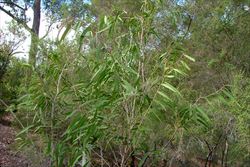
habit of a young tree (Photo: Sheldon Navie)

habit in fruit (Photo: Rob and Fiona Richardson)
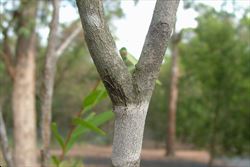
smooth greyish bark on older branches (Photo: Sheldon Navie)
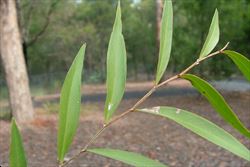
leaves and slightly zig-zagging younger stems (Photo: Sheldon Navie)
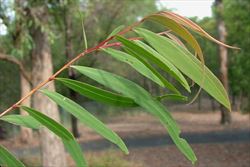
reddish-coloured young leaves and stems (Photo: Sheldon Navie)
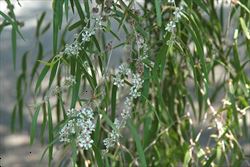
flower clusters (Photo: Rob and Fiona Richardson)

close-up of flowers (Photo: Rob and Fiona Richardson)

close-up of clusters of mature fruit (Photo: Rob and Fiona Richardson)
Scientific Name
Agonis flexuosa (Willd.) Sweet
Synonyms
Metrosideros flexuosa Willd.
Family
Myrtaceae
Common Names
Australian willow myrtle, peppermint, peppermint tree, peppermint willow myrtle, Swan River peppermint, WA peppermint, WA willow myrtle, Western Australian peppermint, Western Australian willow-myrtle, willow myrtle, willow peppermint, willow-leaf peppermint myrtle, willow-myrtle
Origin
Native to the coastal districts of south-western Western Australia.
Naturalised Distribution
Naturalised beyond its native range in Western Australia and sparingly naturalised in southern Victoria.
Notes
Willow myrtle (Agonis flexuosa) is regarded as an environmental weed in Victoria and in those parts of Western Australia that are outside its native range. This species has become established in bushland after escaping from ornamental, rehabilitation or amenity plantings. It is described as being highly invasive in Western Australia and causes major structural changes to the plant communities that it invades. For example, it has escaped from plantings at Kings Park in inner Perth and has also been reported from bushland in the Nedlands area in southern Perth.
Willow myrtle (Agonis flexuosa) can also cause problems in plant communities within its native range, where the management of these communities is not appropriate. For example, tuart forests in south-western Western Australia are being significantly modified by willow myrtle (Agonis flexuosa) invasion due to a change in the normal fire regime (i.e. the removal of regular controlled burning).
This species is also an emerging environmental weed in Victoria and is seen as a potential threat to one or more vegetation formations in this state, though various cultivars are still being promoted as street trees by some local councils. It is listed as an environmental weed in the Mornington Peninsula Shire and has also been recorded in conservation areas in this state (i.e. Lysterfield Lake Park and/or Churchill National Park).

